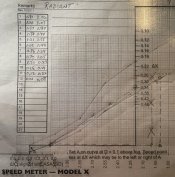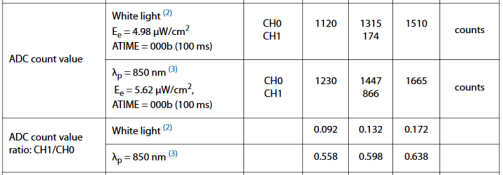I screwed up the drawing but guess what… you hit the ASA triangle exactly with six minutes. Don’t change the developing time, forget what I said about 30 seconds more!
Some sensitometer designs include feedback for intensity / time with a light sensor / accumulator circuit. I assume you don’t have feedback but have some kind of voltage regulator that assures the light will be the same each time?
You have the ability to tweak the time individually per tube. That’s a unique (patentable!) design feature.
Your scanner seems to be serving very adequately as densitometer!
I calibrate my sensitometer by the ASA triangle and on the assumption that Kodak works very hard to assure that TMY2 is exactly 400. (As Ilford does with HP5+). Using that triangle as a guide, the closer your curve gets to hitting the points of (1,3 run 0,8 rise, from 0,1).
Since you hit the triangle exactly, you can take my paste-up top scale as your calibration (until another test suggests a different calibration, or maybe a discovery that something is “out of control”)
If you can reduce all the exposures by 0.03 log meter candle seconds, then your calibration will coincide with 1 MCS at your “#3 from the top” tube (1,5).
To sum: You hit ASA exactly so now my top scale is your calibration.
This is awesome! From "could this work" to matching TMY2 calibration

I don't have any feedback loop for the light level but I assume LEDs do not fade ever with this kind of use. However I took this into account in exposure to avoid voltage drops on the LEDs.
What comes to scanner I think they key is to scan a Stouffer at the same time. That way one gets pretty close calibration and aren't prone to scanner automatics. I programmed a tool to map the values to densities easily too which is a part of this method. But anyways this proves that you actually can use scanner as densitometer if you know the quirks.
What bugs me a bit that the calculated time for 18% / Zone V is a bit too short as I explained before. But maybe there is some switching delay in the LEDs that actually compensate this
 I ended up with that time by just eyeballing the previous "failed" strip. Lucky guess.
I ended up with that time by just eyeballing the previous "failed" strip. Lucky guess.






